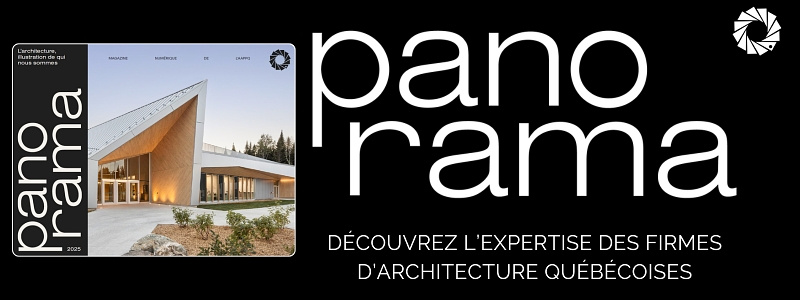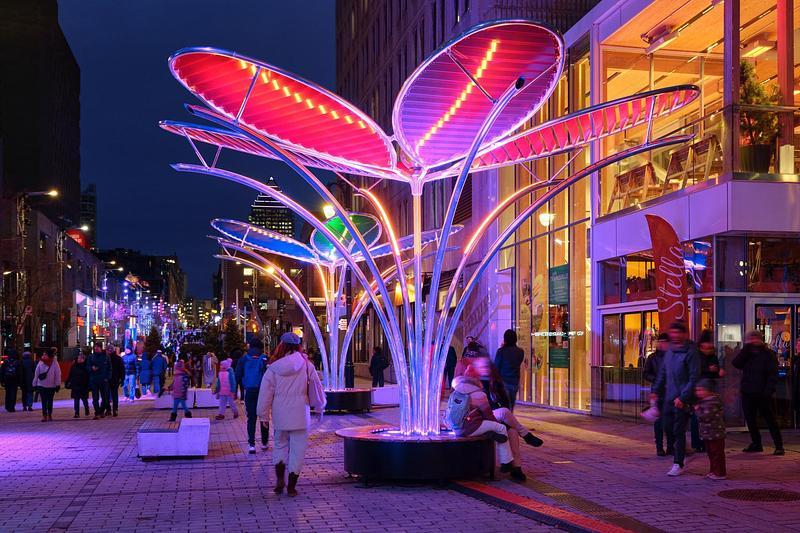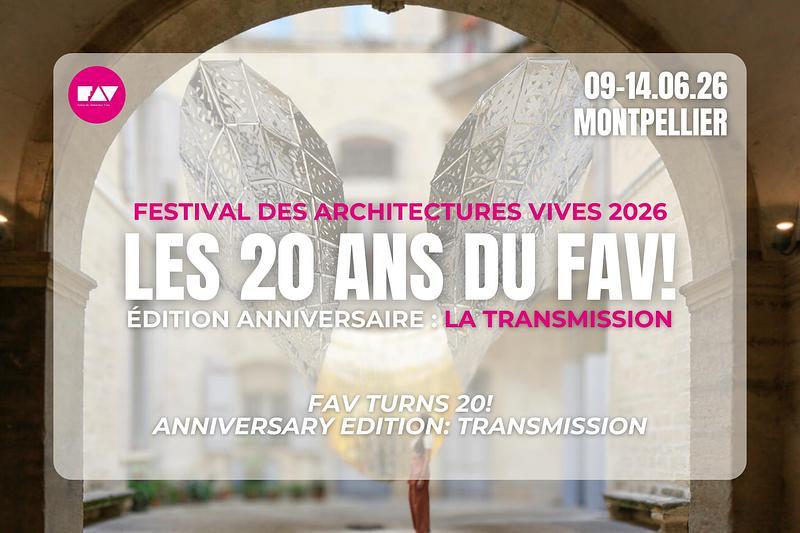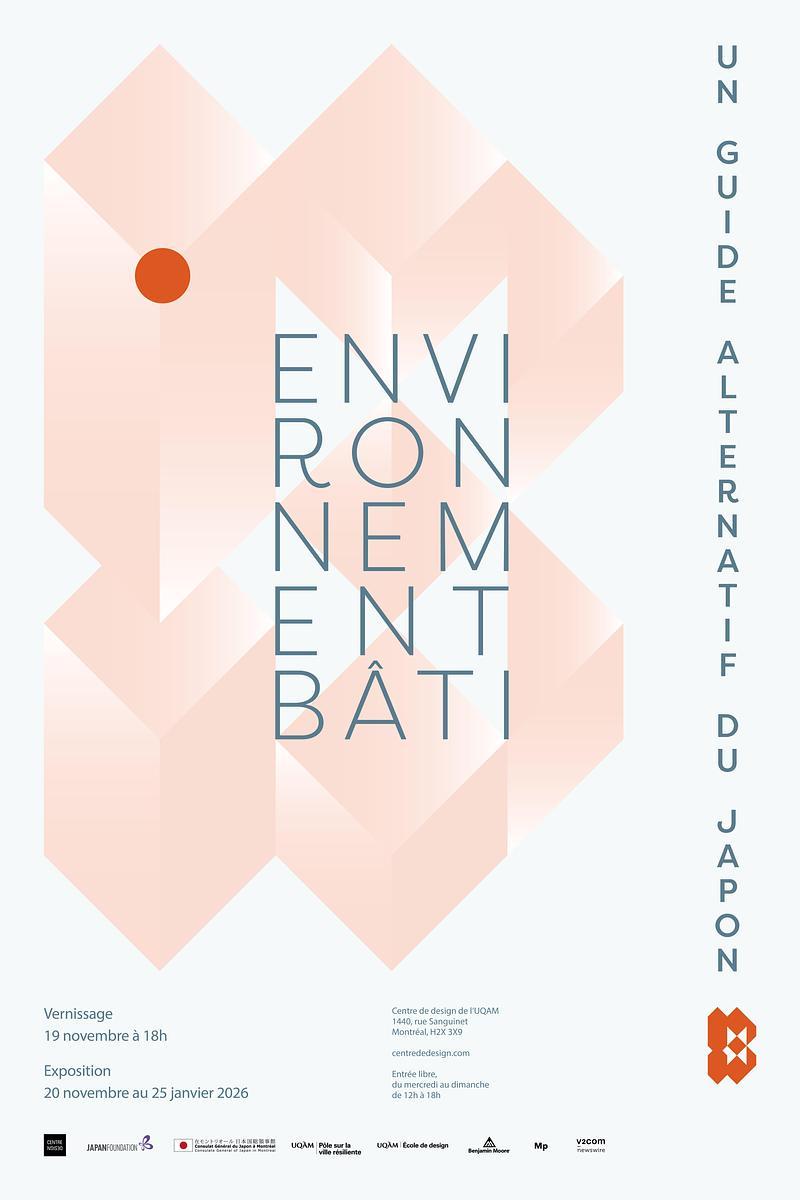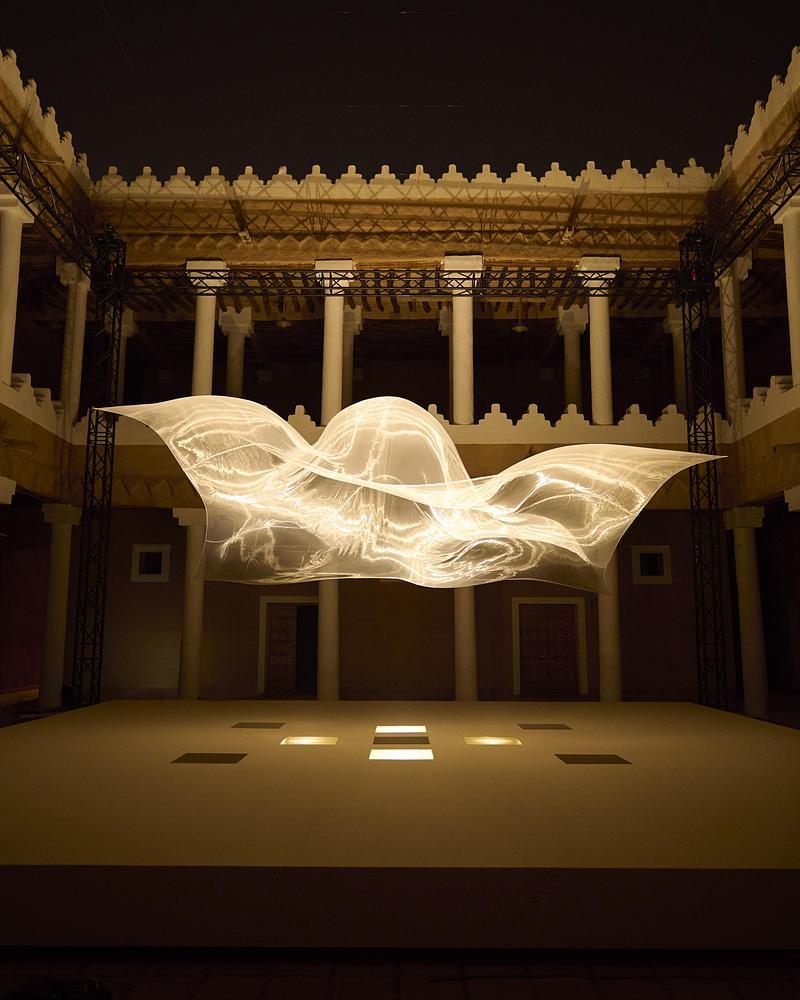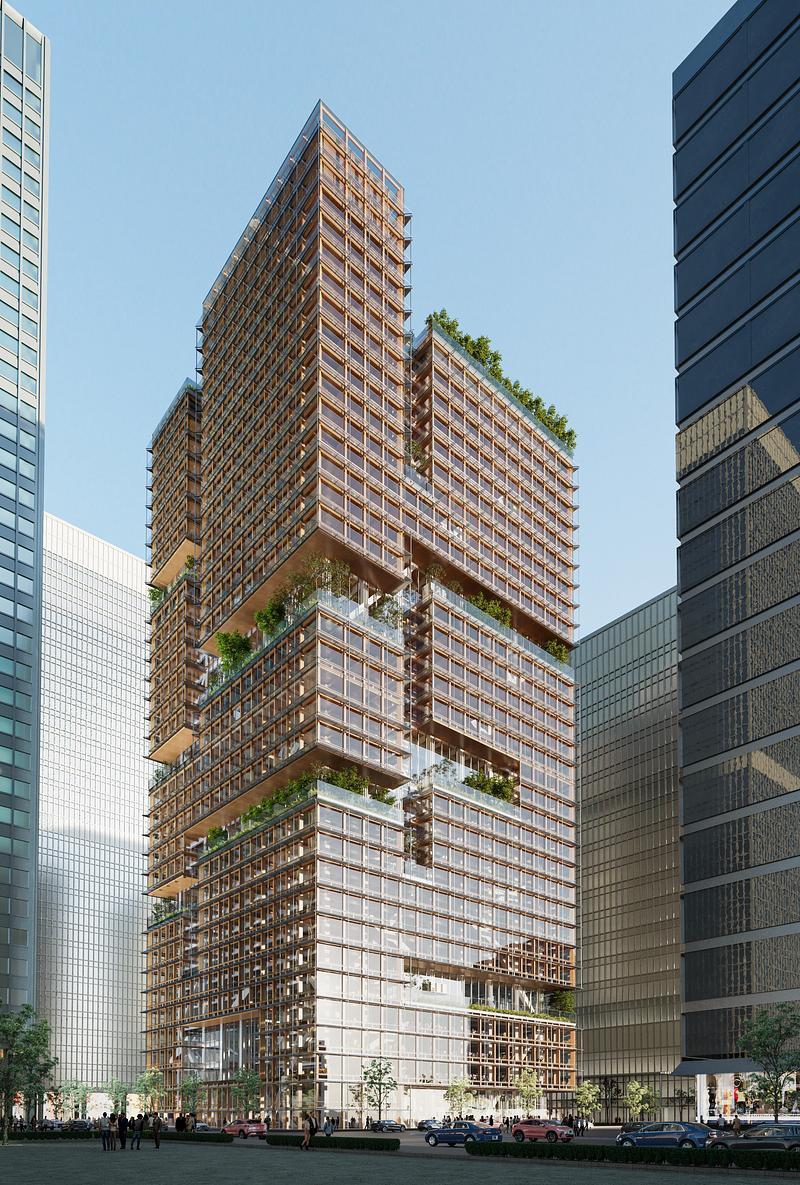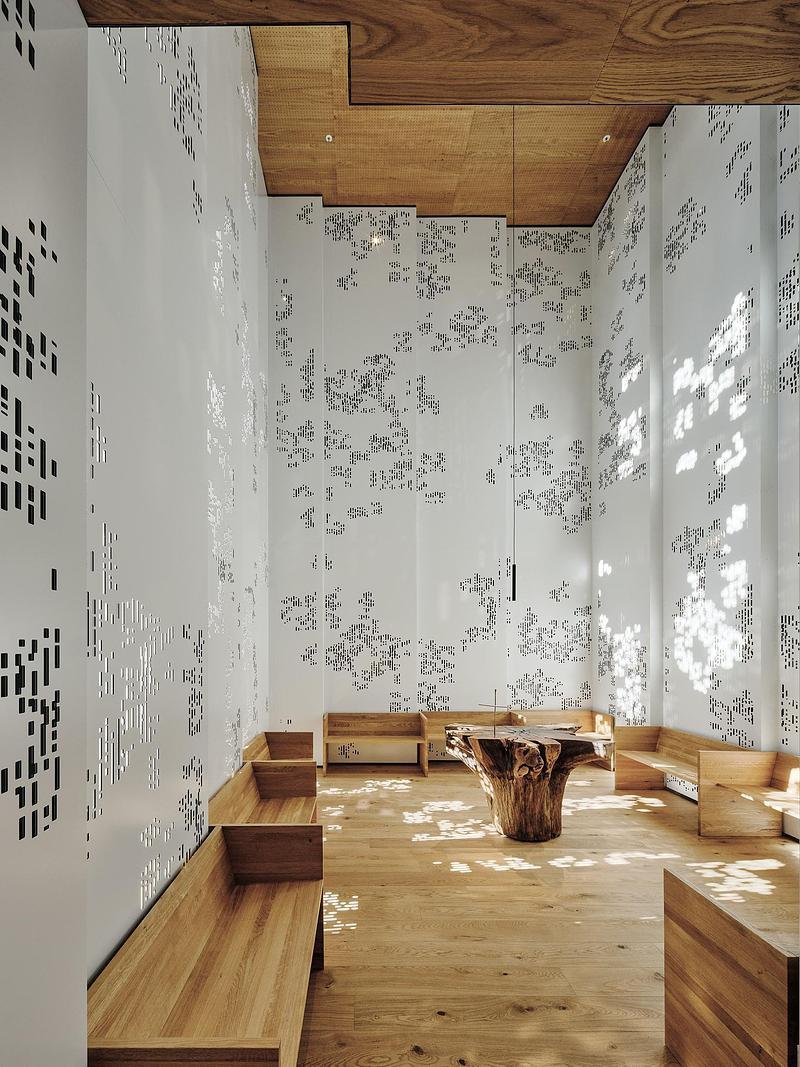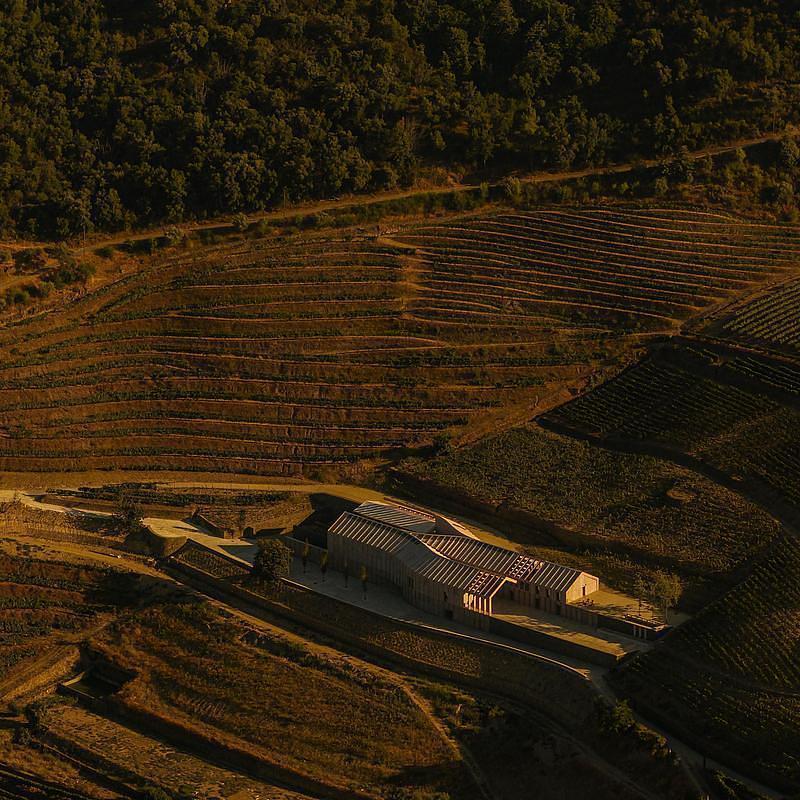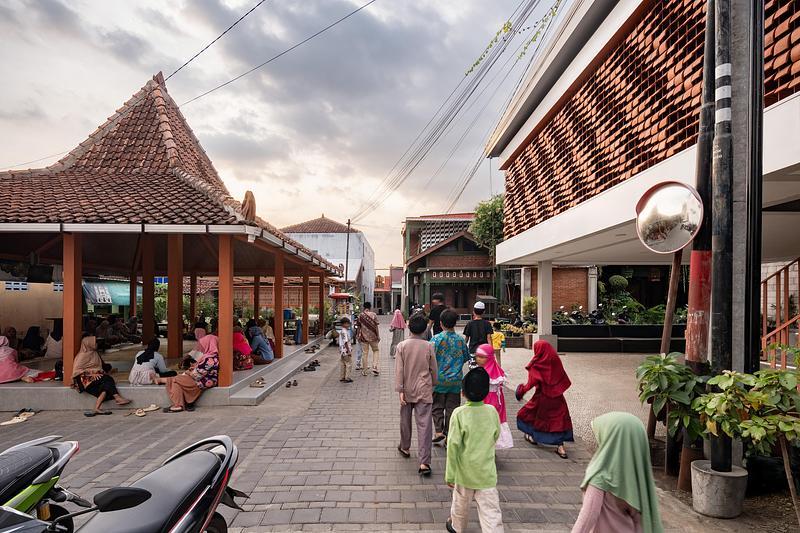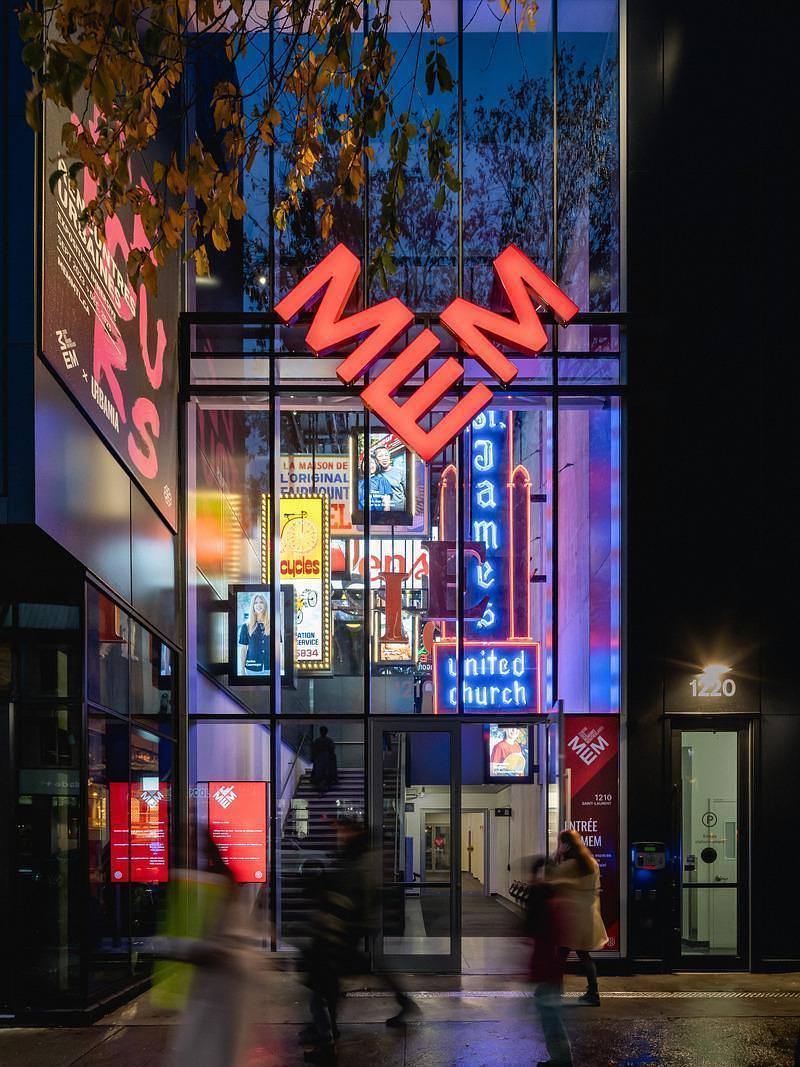
Press Kit | no. 1654-01
Press release only in English
nanotourism
nanotourism international research team
nanotourism is an open research platform to share, promote and grow nanotourism as a new collective awareness
nanotourism is a new, constructed term describing a creative critique to the current environmental, social and economic downsides of conventional tourism, as a participatory, locally oriented, bottom-up alternative
Awarded with the the exhibition’s highest honour the Best Collaboration Award by the BIO50 jury (Konstantin Grcic, Saša J. Maechtig, Alice Rawsthorn).
mentors: Aljoša Dekleva, Tina Gregorič
members (first group – BIO50 open call):
Marjeta Fendre, Alessandro Fonte, Maja Jenko, Living Courtyards Initiative/Association House
(Katja Beck Kos, Nadja Dodlek, Maša Kresnik, Samo Lorber, Kaja Pogačar, Maja Pegan, Niko Poljanšek, Tajša Perović, Robert Veselko), Barbara
Nawrocka, Oaza (Nina Bačun, Ivana Borovnjak, Roberta Bratović, Tina Ivezić, Maja Kolar, Ana-Marija Poljanec), Žiga Rošer, Silvia Susanna, Blaž
Šef, Dominika Wilczynska.
members (second group – AA Visiting School Slovenia + BIO50 open call):
Samo Bojnec, Natalie Jasinski, Marijan Ladić, Jurij Ličen, Janaina Lisiak, Anja Petek, Arefeh Sanai, Kaja Švab, Valentin Tribušon, Dorian Vujnovič, Runze Wang, Zizhengyan Yang, Aleš Žmavc, Vid Žnidaršič.
Assistant and co-mentor (second group):
Jakob Travnik
co-mentor (second group): Blaž Šef
partner: Architectural Association (AA), School of Architecture, London, Visiting School
Open Call, 13 February 2014
After decades of a booming tourism industry with wide impact on territories and economies all over the world, are there smaller-scale, non-intrusive ways of promoting a tourism experience? The nanotourism team will work in two different constellations: the first group will research possible experiences of tourism, exploring relevant global references as well as regional potentials. This research will be the basis
for the second group, which will come to fruition during the AA Visiting School Slovenia, a workshop taking place in Vitanje in July 2014.
Reaction, 24 August 2014
nanotourism is a new, constructed term describing a creative critique to the current environmental, social and economic aspects of tourism. nanotourism is a site specific, participatory, locally oriented, bottom-up alternative. It operates as a tool to stimulate interaction between provider and user by co-creation or exchange of knowledge. nanotourism is not about scale; it enables experiences from the bottom-up, using local resources. nanotourism is beyond tourism; it is an attitude to improve specific everyday environments and to open up new local economies. We invite you to get involved, participate and become a nanotourist everywhere – even in your own city, town, street or home!
Impact
nanotourism group involved more than 400 people during its research development and relative actions. After the opening it still continues to connect people to the becoming nanotourism network. Currently all the initiated projects are still alive, pursuing the idea to create and promote new operational models of tourism.
NANOTOURISM DEFINITION
nanotourism is a new, constructed term describing a creative critique to the current environmental, social and economic downsides of conventional tourism, as a participatory, locally oriented, bottom-up alternative. Defining nanotourism runs twofold: by finding and learning from existing examples and by identifying and creating new site-specific experiences. It operates as a social tool to stimulate mutual interaction between provider and user by co-creation or exchange of knowledge.
It is not about scale, but is a projected ability to
construct responsible experiences from the bottom-up, using local resources. nanotourism is beyond tourism, it is more an attitude to improve specific everyday environments and t open up new local economies. Involve, participate and become a nanotourist everywhere, even in your own city, town, street or home!
The term tourist is increasingly used pejoratively, to imply a shallow interest in the cultures or environments. No one wants to be a tourist any more, but prefers to be a traveler, passenger, guest... Instead of superficial one-way observation, one participates, exchanges or co-creates in a two-way relationship an devolves to nanotourist.
Hacking the definition of Critical Design from Dunne & Raby by replacing critical design with nanotourism and design with tourism:
hat is nanotourism?
nanotourism uses speculative design proposals to challenge narrow assumptions, preconceptions and givens about the role tourism play in everyday life. It is more of an attitude than anything else, a position rather than a method. There are many people doing this who have never heard of the term nanotourism and who have their own way of describing what they do. Naming it nanotourism is simply a useful way of making this activity more visible and subject to discussion and debate.
nanotourism is critical, but primarily bottom-up. Therefore it works as an association to nanotechnology as organisation of matter at the atomic and molecular scale, essentially by bottom-up construction method. Pre-fix nano in nanotourism implies bottom-up processes, not visible to a human eye, as new operational
models of tourism.
NANOTOURISM RESEARCH PROCESS
After decades of a booming tourism industry with wide impact on territories and economies all over the world, are there smaller-scale, non-intrusive ways of tourism?
nanotourism was in a process of working theory during BIO50. The international team of experts, designers and architects was intensely defining the term and notion of nanotourism, first as part of a larger collaborative of the Biennial and then during the AA Visiting School Slovenia 2014.
What is the challenge of nanotourism? How can nanotourism improve the world? These initial questions activated the systematic research process of defining nanotourism: by finding and learning from existing examples and by identifying new potentials of nanotourism on several sites in the region and creating new experiences though a set of case studies. Driven by Participatory Action Research principles they offer open source models of nanotourism establishing new local economies and offering visitors and locals to deepen their knowledge, experience and understanding of the world.
nanotourism is | is not dictionary:
critical | conformist
confronting current realities and presumptions of tourism
participatory | passive
fostering co-creation and exchange between users and providers
bottom-up | top-down
processing local information to form higher level systems
site-specific | site-generic
extremely responsive to contexts, therefore perpetually unique
local | global
produced with local support and supporting locals
social | unsocial
collaborative, community oriented and relating to people
responsible | irresponsible
non-intrusively related to the community and
environment
inventive | conventional
progressive, adding new values and creating fresh potentials
educative | non-educative
volunteering knowledge exchange and creating development
CASE STUDIES
RAJZEFIBER BIRO, NANOTOURIST AGENCY - Maribor (Slovenia)
authors: Živa dvorišča/Living Courtyards Initiative, Društvo Hiša / Association House (Katja Beck Kos, Nadja Dodlek, Maša Kresnik, Samo Lorber, Kaja Pogačar, Maja Pegan, Niko Poljanšek, Tajša Perović, Robert Veselko)
mentors: Aljoša Dekleva, Tina Gregorič
A nanotourist agency, Rajzefiber Biro was strategically established in an abandoned shop within the old city centre of Maribor.
The collectively self-renovated project space operates as a multipurpose arena for exchange, participation, performance, education
and production. It produces ART-FACTS, made by local artists and craftsmen. The agency initiates research, follows the needs of participants and provides an informal experience of the city.
facebook.com/rajzefiberbiro
BIO50}hotel, EXHIBITION HOTEL - Ljubljana (Slovenia)
authors: Alessandro Fonte, Silvia Susanna
mentors: Aljoša Dekleva, Tina Gregorič
involving: BIO50 Knowing Food , BIO50 Fashion System, BIO50 Walking the city, BIO50 Hidden Crafts
BIO50}hotel is a temporary hotel established at the MAO. It critically challenges tourism connected to exhibitions, actively interfering with its curatorial approach. Nanotourists will be hosted in the museum free of charge and asked to contribute to the Biennial in return by actively participating in BIO 50 events or by suggesting their own lectures, exhibitions, and round tables, among others.
Furthermore, visitors take part in a 1:1 action by organizing their accommodation, repositioning, using and testing the exhibited items to confront the generic hotel room setup.
bio50hotel.tumblr.com
facebook.com/bio50hotel
exhib.hotel@gmail.com
OLD SCHOOL ILICA, CO-CREATION AS NANOTOURISM - Zagreb (Croatia)
authors: Oaza - Nina Bačun, Ivana Borovnjak, Roberta Bratović, Tina Ivezić, Maja Kolar, Maša Poljanec
mentors: Aljoša Dekleva, Tina Gregorič
in collaboration with: shoemaker - Mr. Stipan Josić, printer - Mr. Dubravko Lackovićduvet, restorer - Mrs. Alenka Antolić-Soban, barber - Mr. Ivan Prgomet, Greta
video: Neven Petrović, editing: Emir Šehanović, photos: Bojan Mrđenović
Old School Ilica is a collaborative, local craft production initiative, realized to recover the disappearing traditional crafts and local economies in a street in Zagreb. Participants are invited to learn-and-contribute in workshops with local craftsmen. By active participation, local residents or local designers become nanotourists in this street, creating novel products, and services,
reinforcing the local economy and transforming the Ilica street identity.
oldschoolilica.org
info@o-a-z-a.com
ROUTINE REVOLUTION, REVIVING MEMORIES - Kraków (Poland)
authors: kolektyw Palce Lizać - Barbara Nawrocka, Dominika Wilczyńska
mentors: Aljoša Dekleva, Tina Gregorič
Routine Revolution explores a typical 1960s housing estate to find the extraordinary in the everyday. Interviews, meetings, walks and workshops with the inhabitants were organized within the neighborhood. The aim was to find new perspectives, learn and absorb the history and to collect private memories of the place. The result was a series of collages summing up the neighborhood’s collective memory. One of the collages has been chosen by inhabitants and became a postcard, stimulating other residents of
Krakow to perceive this area differently and rediscover their own history.
facebook.com/kolektywpalcelizac
KSEVT - CONNECTING PEOPLE, LOCAL NANOTOURIST GENERATOR - Vitanje (Slovenia)
authors: Marjeta Fendre, Maja Jenko, Žiga Rošer,
Blaž Šef
mentors: Aljoša Dekleva, Tina Gregorič
The KSEVT connecting people is a generator of nanotourism in the small town of Vitanje, with its new bold landmark KSEVT, a space research exhibition venue and local community centre. The project operates as mediation and collaboration platform among existing local associations, administration, community interest groups and local residents. It launches an annual program of
participatory activities (festivals, workshops…) based on the exchange of knowledge and in the reuse of existing private and public built structures.
AA VISITING SCHOOL SLOVENIA, NANOTOURISTIC STRATEGIES - Vitanje (Slovenia)
participants: Jurij Ličen, Janaina Lisiak, Anja Petek, Zizhengyan Yang (HangOut Vitanje); Samo Bojnec, Natalie Jasinski, Kaja Švab, Vid Žnidaršič (ksevt hotel); Marijan Ladić, Dorian Vujnovič, Runze Wang (Ksevt outdoor community); Arefeh Sanai, Valentin Tribušon, Aleš Žmavc (Vitanje Expo @ ksevt)
mentors: Aljoša Dekleva, Tina Gregorič; assistant and co-mentor: Jakob Travnik; co-mentor: Blaž Šef
photos: Ajda Schmidt & participant
in cooperation with: Architectural Association, London experts in juries and tutorials: Jan Boelen, Nejc Matjaž, Vedran Mimica, Vasa Perović, Christopher Pierce, Nikola Radeljković, Miha Turšič, Boštjan Vuga, Dragan Živadinov
In July 2014, the AA Visiting School Slovenia, a three week design-build-make programme part of Architectural Association School of Architecture in London, explored nanotouristic strategies in relation to the building and institution of KSEVT, which generate 25.000 visitors per year, and Vitanje, the town of 600 inhabitants. Exhibition hotel in KSEVT, Accommodation Strategies in Vitanje and Objects of Activation were three proposed topics that stimulated students to develop and test in scale 1:1 four strategic projects.
facebook.com/AA-Visiting-School-Slovenia-Vitanjeaavisitingschool-slovenia.squarespace.com
BIO 50: 3, 2, 1… TEST
24th Biennial of Design, Ljubljana, Slovenia
18. 9.—7. 12. 2014
For more information
Media contact
- nanotourism
- Silvia Susanna. M.Arch
- nanotourism@gmail.com
- 0039 3273267186
Attachments
Terms and conditions
For immediate release
All photos must be published with proper credit. Please reference v2com as the source whenever possible. We always appreciate receiving PDF copies of your articles.

Low-resolution image : 2.77 x 0.58 @ 300dpi ~ 74 KB
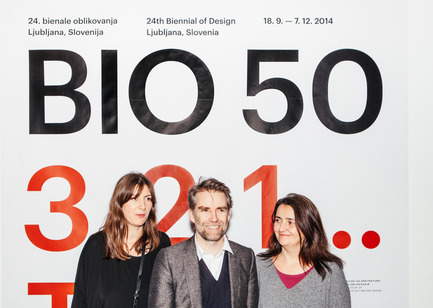
from left to right: Maja Vardjan, Jan Boelen, Cvetka Pozar
High-resolution image : 16.04 x 11.41 @ 300dpi ~ 7.9 MB
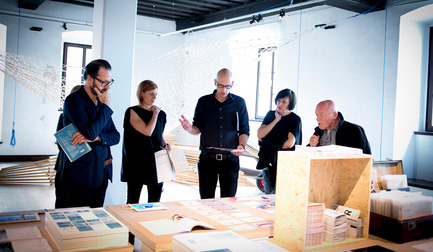
from left to right: Konstantin Grcic, Tina Gregorič, Aljoša Dekleva, Alice Rawsthorn and Saša j. Mächtig.
High-resolution image : 16.49 x 9.6 @ 300dpi ~ 5 MB
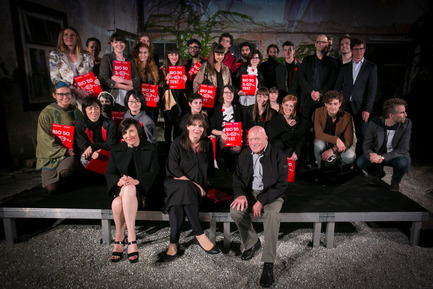
High-resolution image : 11.41 x 7.61 @ 300dpi ~ 1.6 MB
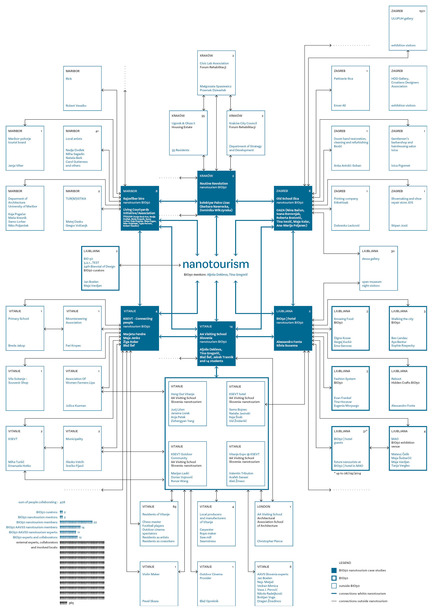
Medium-resolution image : 7.47 x 10.55 @ 300dpi ~ 1.5 MB
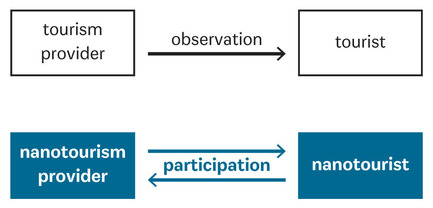
Low-resolution image : 3.49 x 1.68 @ 300dpi ~ 160 KB
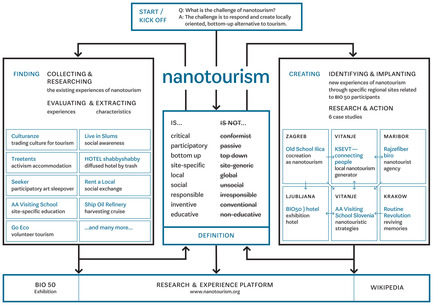
High-resolution image : 15.91 x 11.21 @ 300dpi ~ 3.2 MB
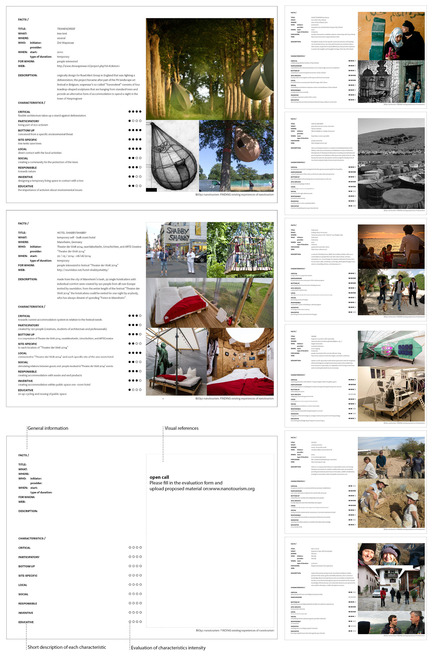
Medium-resolution image : 7.18 x 10.88 @ 300dpi ~ 2.6 MB
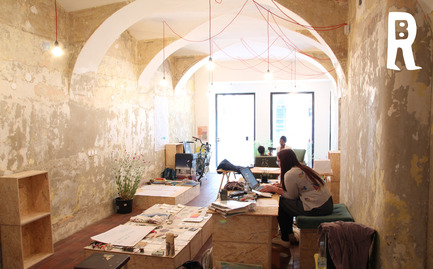
nanotourist agency
Medium-resolution image : 7.27 x 4.52 @ 300dpi ~ 1.7 MB
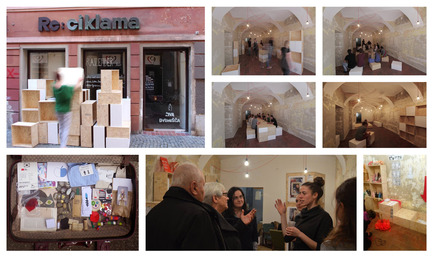
a nanotourist agency
first line, from left to right: Rajsefiber Biro front view with self-made wooden multifunctional boxes (for seating, sleeping, organizing, sitting...), scenario shop - agency, scenario concert - show, scenario workshop, scenario accommodation
second line: suitcase of Memorabilia a project of Nadja Dodlek, an event, a possible configuration of the wooden boxes.
Medium-resolution image : 7.49 x 4.47 @ 300dpi ~ 1.7 MB
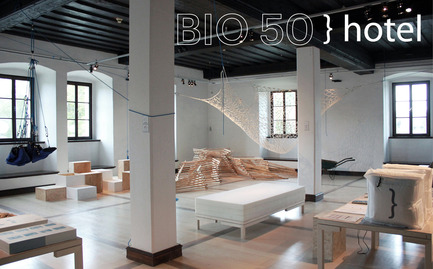
exhibition hotel
Medium-resolution image : 7.27 x 4.52 @ 300dpi ~ 1.8 MB
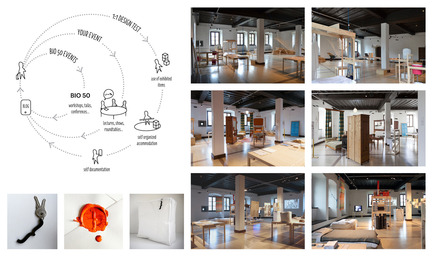
exhibition hotel
top left: process diagram, multiple levels of active guests' participation
lower left: BIO50}hotel kit: keys, welcome letter and goodnight guest pack
right column: selection of space evolution moments, first line Studio Superfluo + Sustainable Making, second line Stefan Alber, third line Lanificio Leo and Gianluca Seta.
Medium-resolution image : 7.52 x 4.45 @ 300dpi ~ 1.4 MB
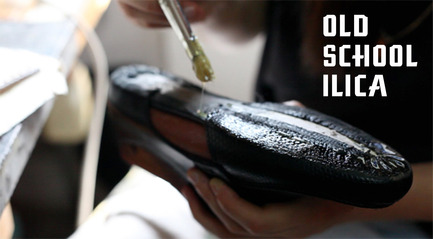
cocreation as nanotourism
High-resolution image : 11.81 x 6.51 @ 300dpi ~ 2 MB
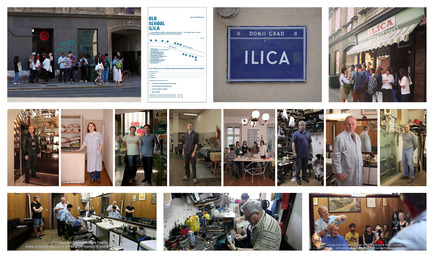
co-creation as nanotourism
first line, from left to right: public presentation, application form, Ilica tablet, workshop day
second line: local artisans participating
third line: gentlemen's classic hairdressing day, shoemaking course, gentlemen's classic hairdressing course
Medium-resolution image : 7.51 x 4.46 @ 300dpi ~ 2.1 MB
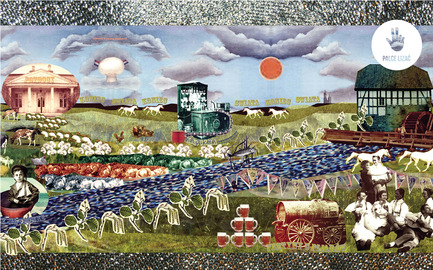
reviving memories
Medium-resolution image : 7.27 x 4.53 @ 300dpi ~ 2.5 MB
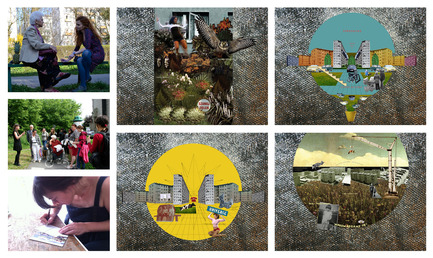
reviving memories
first column, from top to down: interview with the inhabitants, survey in Uborek neighborhood with the inhabitants, sending the postcard with the collage choosen by the inhabitants to MAO
second and third column: collages of common memories
Medium-resolution image : 7.52 x 4.48 @ 300dpi ~ 3.6 MB
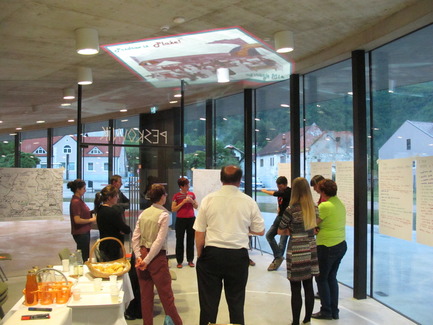
local nanotourism generator
Medium-resolution image : 7.57 x 5.68 @ 300dpi ~ 1.1 MB
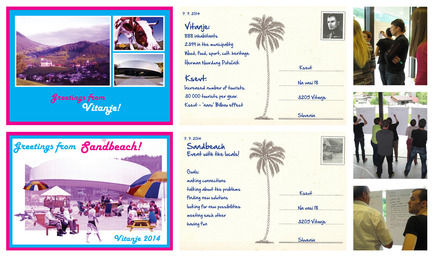
local nanotourism generator
first and second column: postcards focusing on aspects, potentials and scenarios of Vitanje
third column: participatory strategies to collect feelings, desires and visions of the inhabitants of Vitanje
Medium-resolution image : 7.47 x 4.43 @ 300dpi ~ 1.7 MB
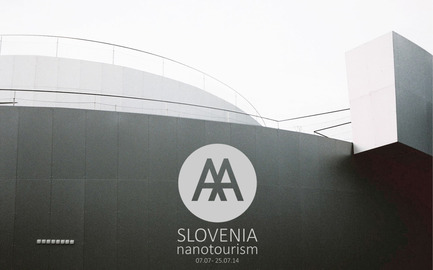
nanotouristic strategies
Medium-resolution image : 7.26 x 4.53 @ 300dpi ~ 1 MB
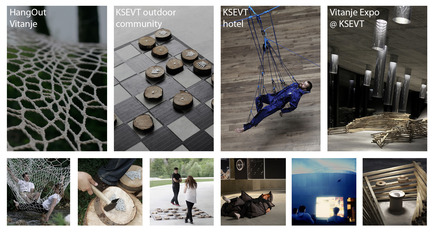
nanotouristic strategies
first line, from left to right: XL lace hammock, public outdoor chessboard, lievitating suit, flexible wooden displayer system
second line: relaxing time on the XL lace hammock, working time, play time in the outdoor chess board, testing the 3D sleeping, kinoKSEVT outdoor public cinema, a possible configuration of the local wooden slats
Medium-resolution image : 7.49 x 4.02 @ 300dpi ~ 1.8 MB
